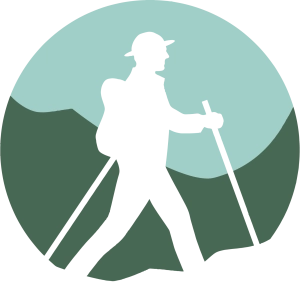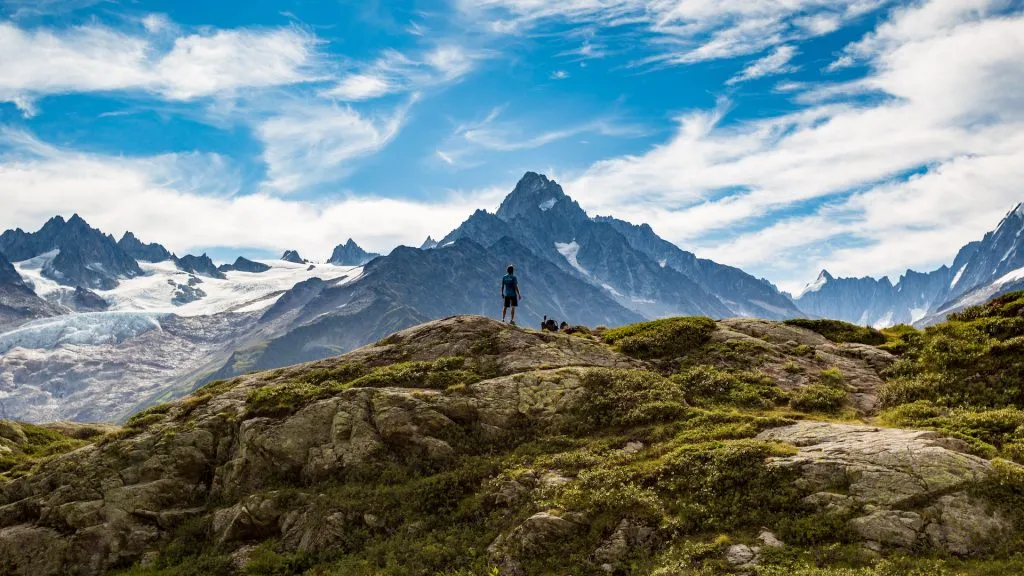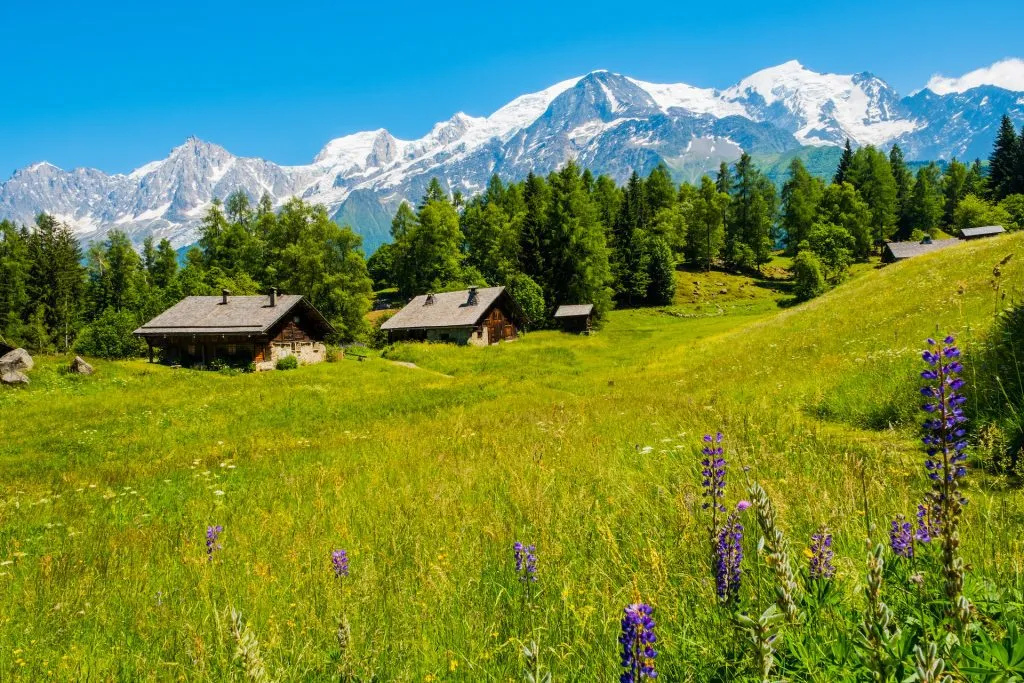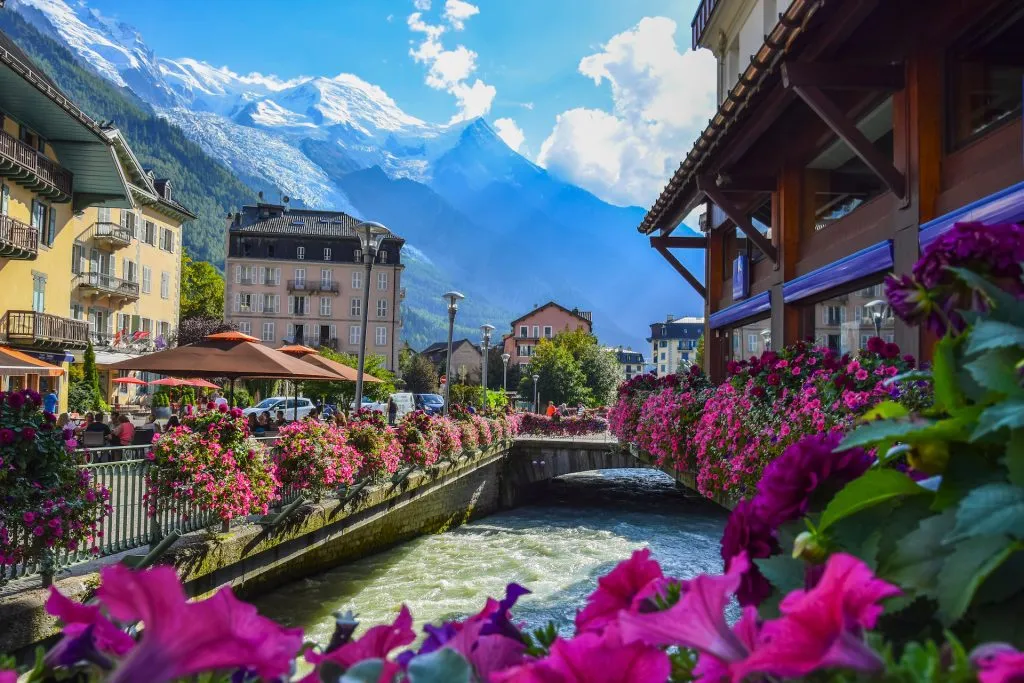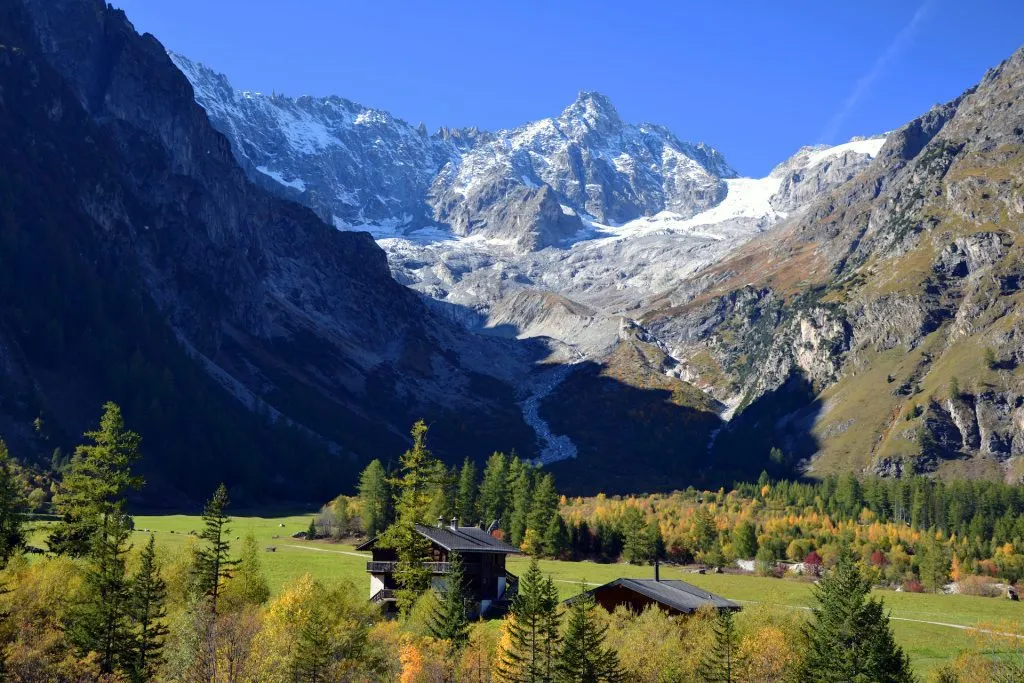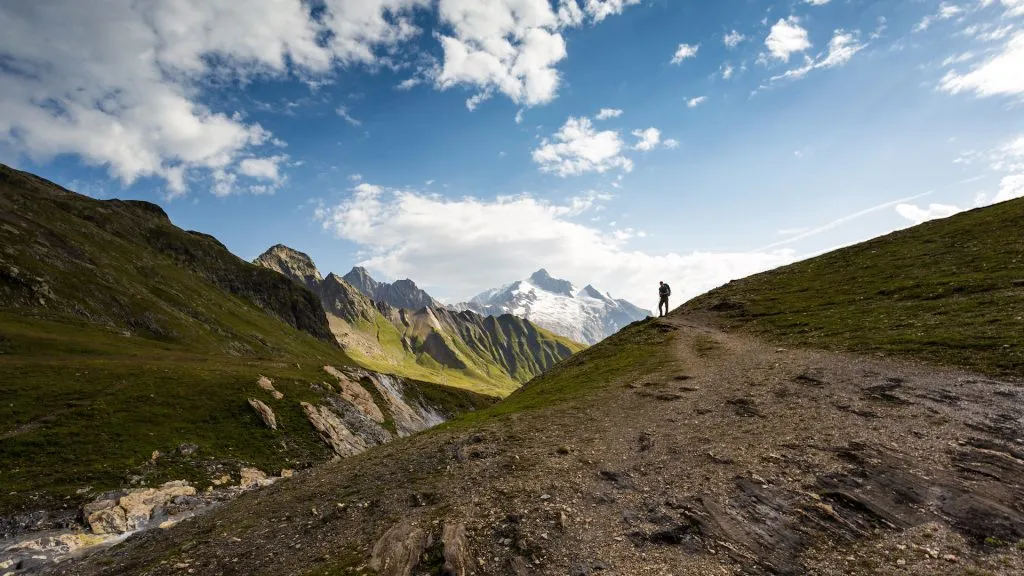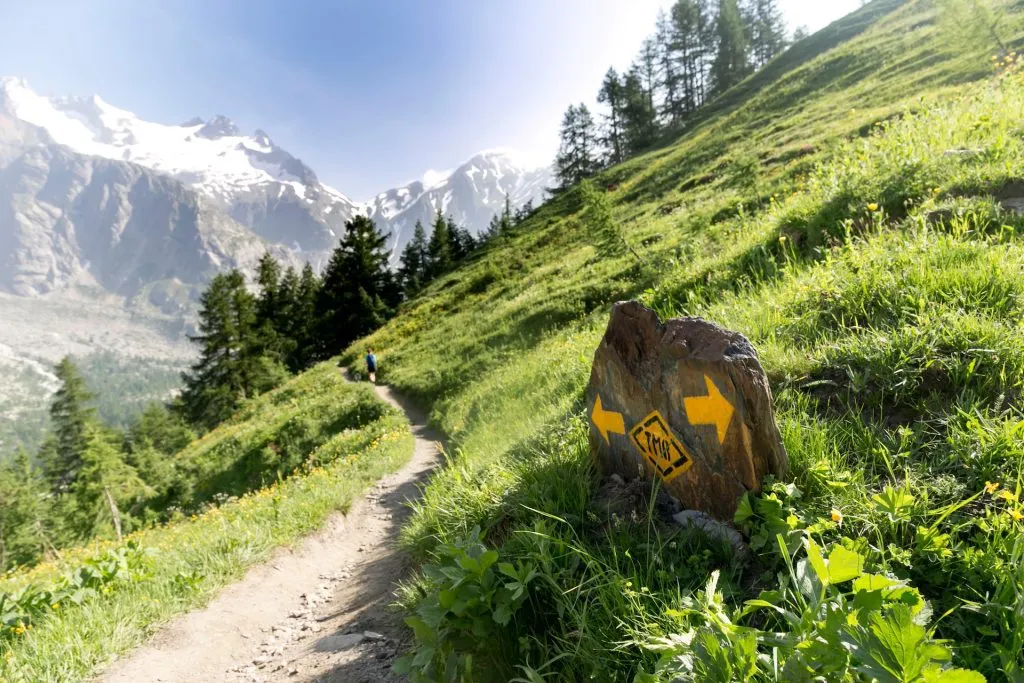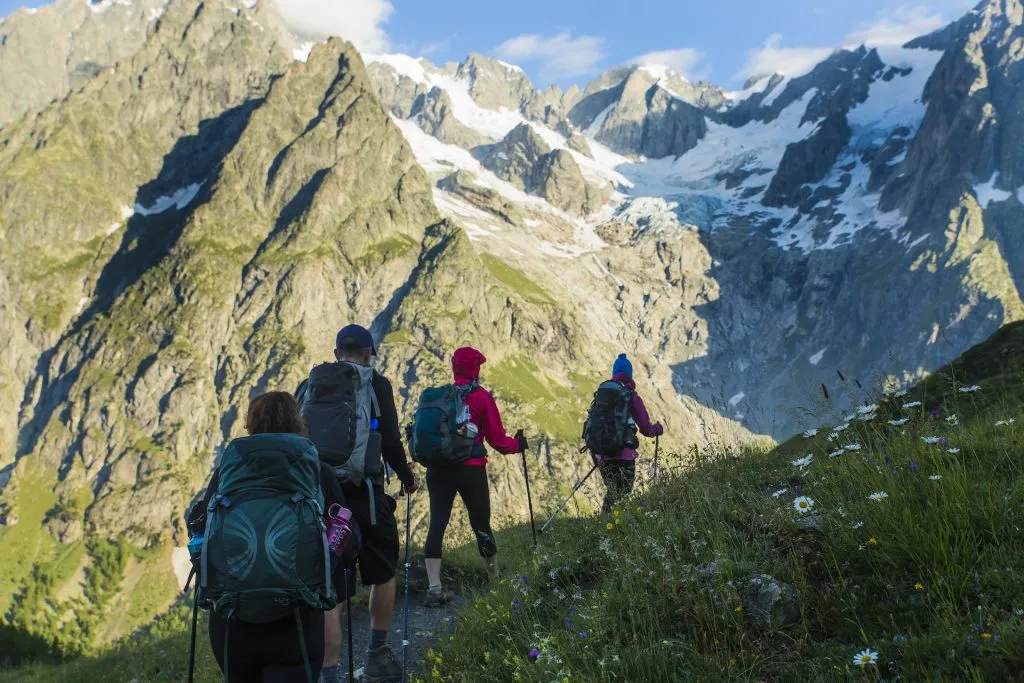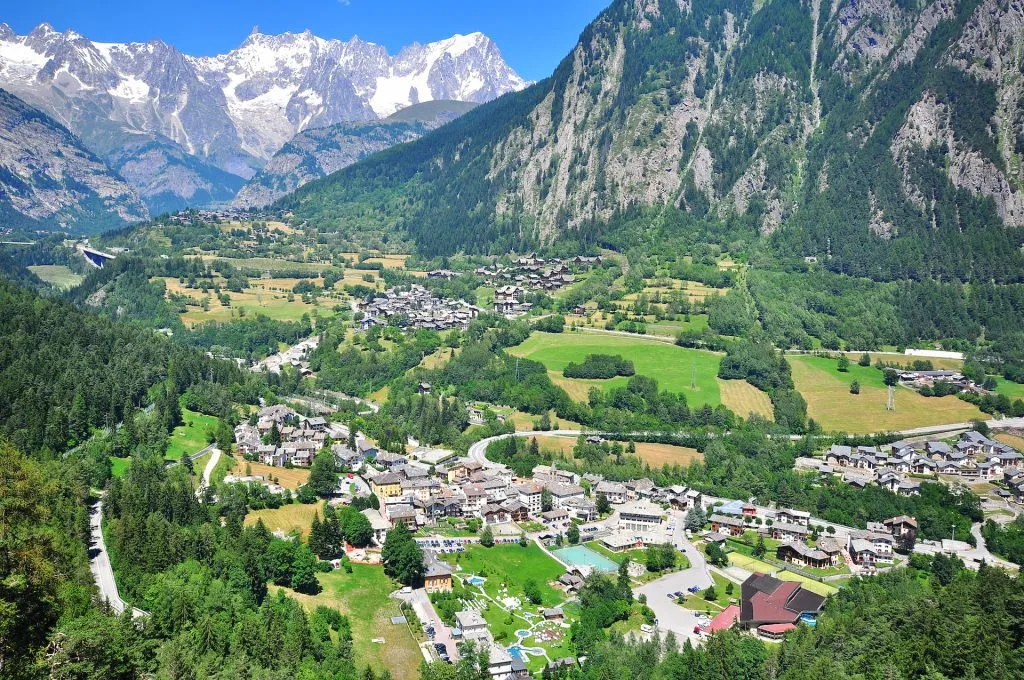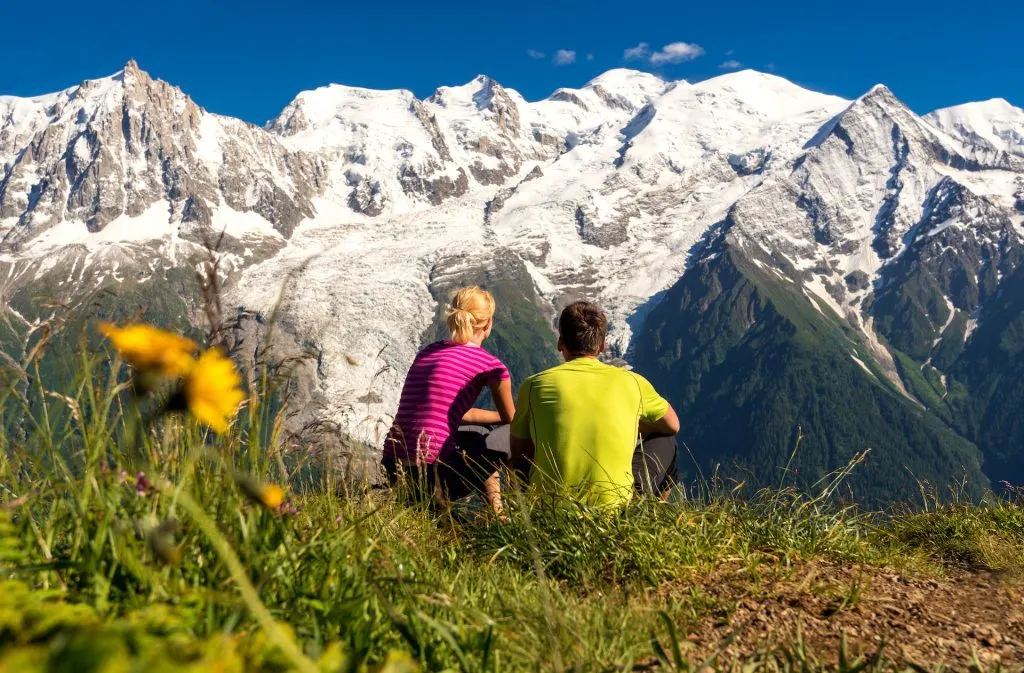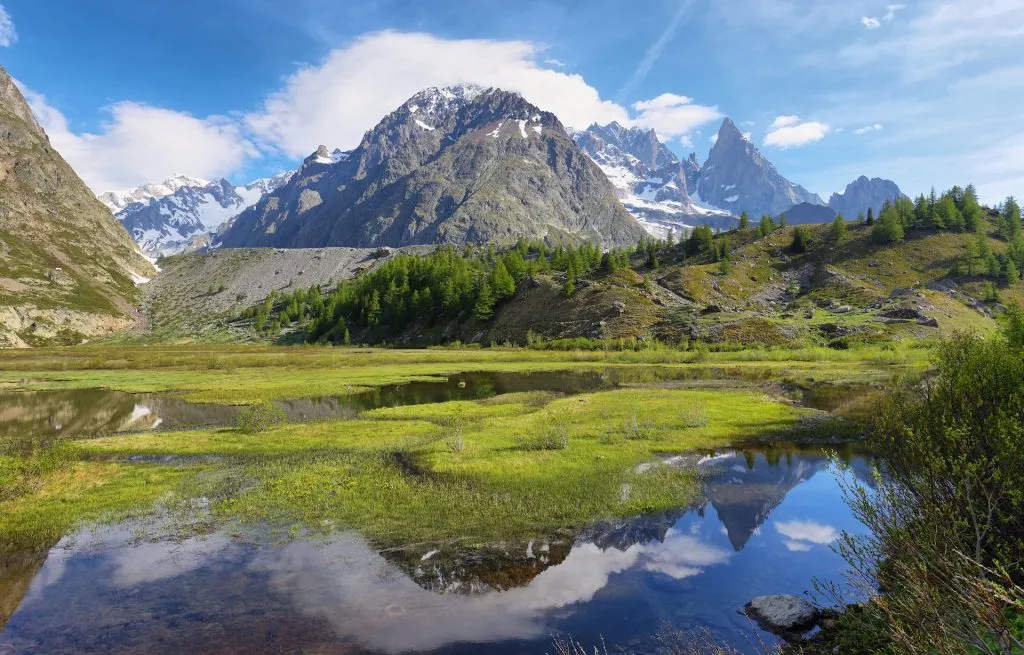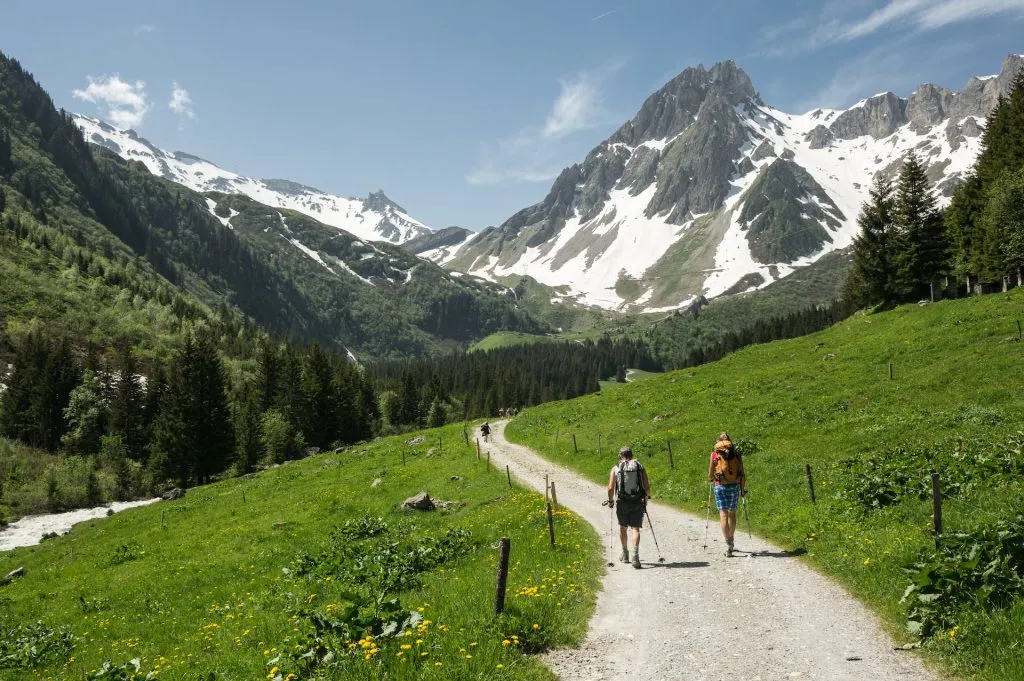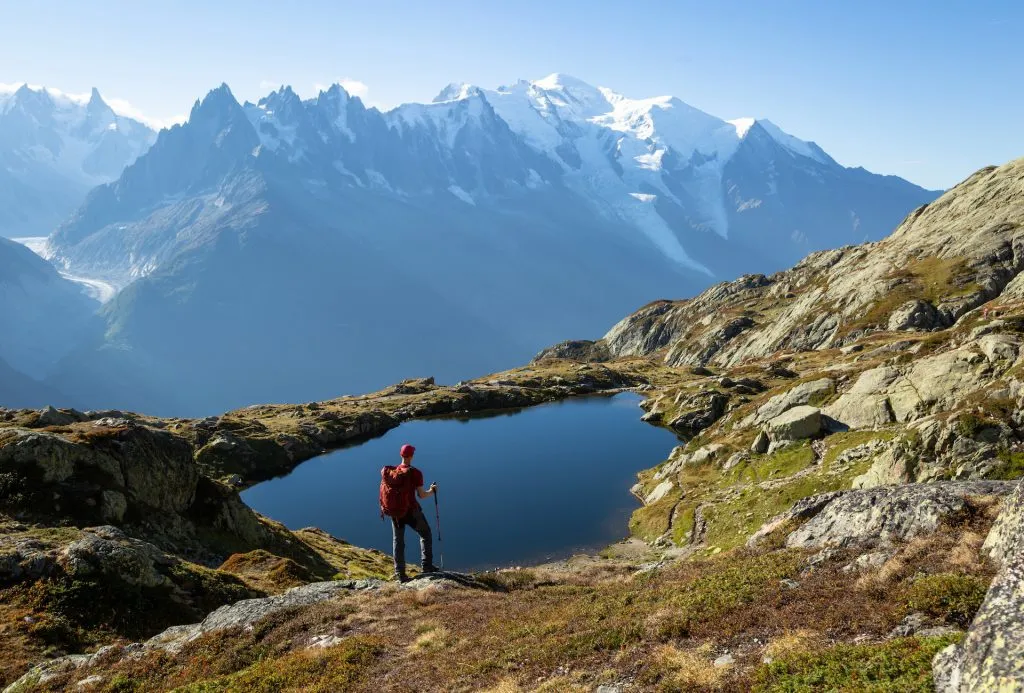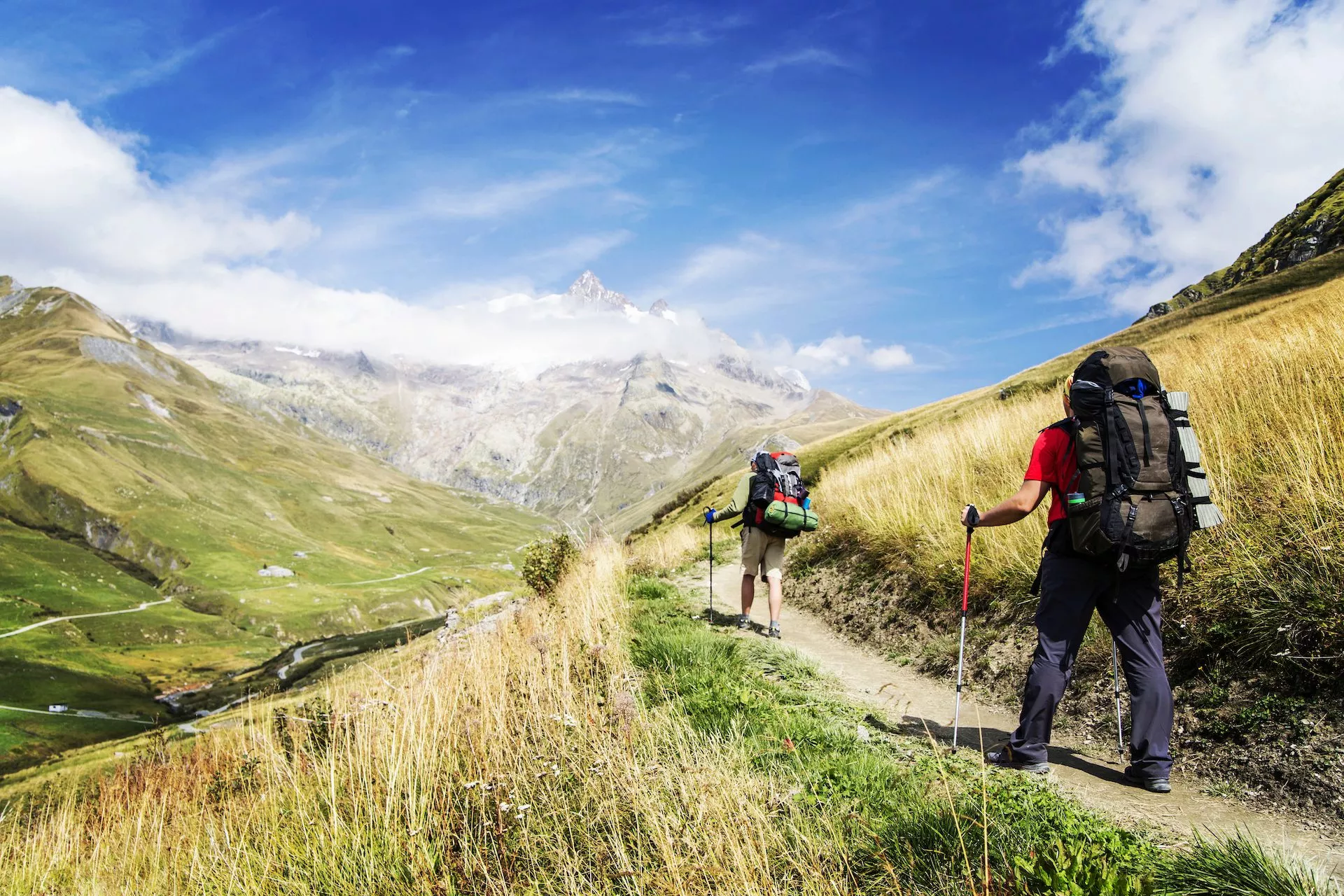
Tour du Mont Blanc Self-Guided
Experience the natural splendor of the Tour du Mont Blanc by hiking the full 170-kilometer route
Embark on an 11-day adventure discovering the stunning scenery of the Alps
Stay in charming mountain huts and boutique hotels and indulge in delicious local cuisine
Explore three European countries on foot, passing through France, Italy, and Switzerland
Itinerary
Start your adventure in Les Houches, where you can take a cable car to Bellevue or hike up the mountain. From there, take a short walk to Col du Voza and cross the iconic Himalayan suspension bridge with stunning views of Bionnassay glacier.
Rest at Col du Tricot before the steep descent to Refuge Miage, with great views of Miage Valley and a mountain pass on the horizon for tomorrow. The classic route goes down from Col de Voza to Val Montjoie and then to Les Contamines, which makes Day 2 shorter but less scenic.
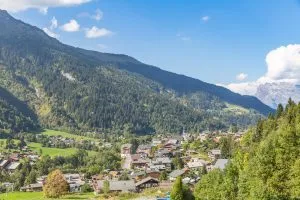
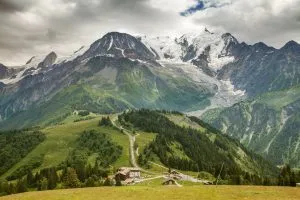
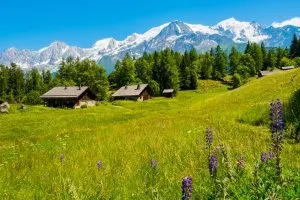
Begin the day with a relatively short climb over Auberge du Truc and descend through the forest to Les Contamines. Walk along the river or take a shuttle bus to Notre Dame de la Gorge before heading upwards.
Hike past Refuge Nant Borrant for lunch and then towards Col du Bonhomme. Ascend further towards Col de la Croix du Bonhomme to reach Refuge de la Croix du Bonhomme, one of the most remote huts on the trail.

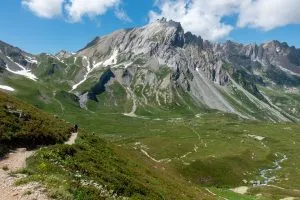
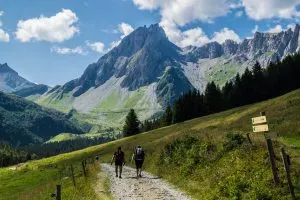
Descend down to Les Chapieux and begin a steady climb past Les Mottets to the Col de la Siegne, the border between France and Italy. Take in the epic mountain scenery while hiking down to Rifugio Elisabetta, with stunning views of the Mont Blanc massif from the Italian side.
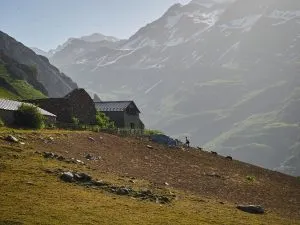
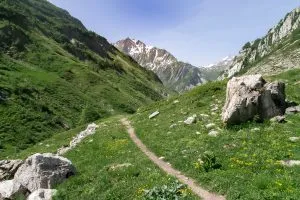
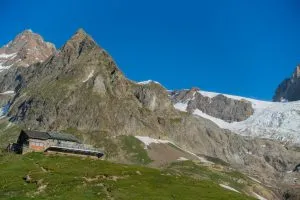
Climb the scenic path on the right with great views of Mont Blanc instead of following the valley. After reaching the green ski slopes of Maison Vieille, start the steep descent to Courmayeur, the Italian Chamonix. Take a cable car down to the alpine town to save your knees.
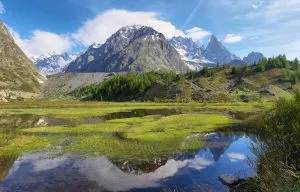
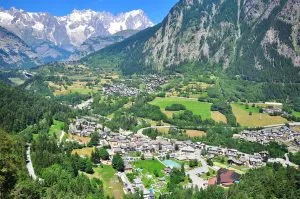
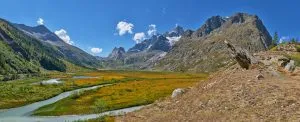
Leave Courmayeur for the mountains above and reach Rifugio Bertone. Take the classic TMB route on the north flank of the mountain peaks with great views of the valley and the massif to the left, or go higher to reach the mountain ridge for one of the most peaceful parts of Tour du Mont Blanc. Both routes meet at Rifugio Bonatti before descending to the valley to Chalet Val Ferret, where you’ll stay for the night.
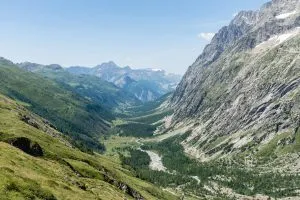
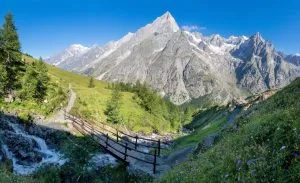
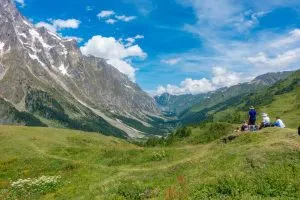
Ascend the Grand Col Ferret to enter Switzerland and notice the changing landscape. Follow the trail on the right flank of La Dotse and slowly descend into Ferret Valley and towards the village of La Fouly.
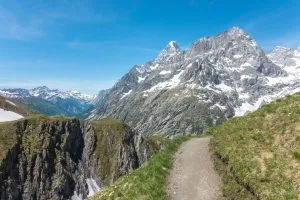
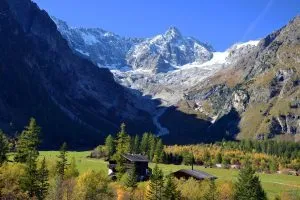
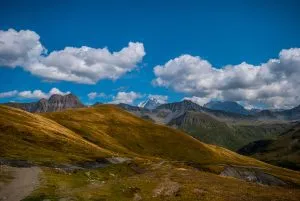
Tour du Mont Blanc’s easiest stage takes you slowly through the valley, past green meadows, and Alpine villages. End the day at the pretty lake town of Champex-Lac, which looks like something straight out of the Canadian Rockies.
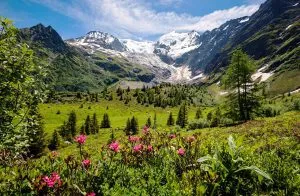
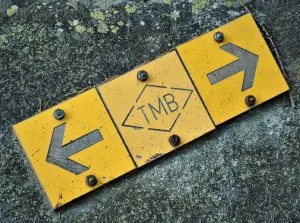
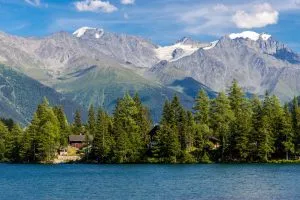
Leave the relaxing valley and ascend the Col de la Forclaz with great views of the Rhone Valley or cross Fenetre d’Arpette, the most technically demanding part of TMB, but with more scenic and wild panoramas. Both trails descend to the Swiss village of Trient.
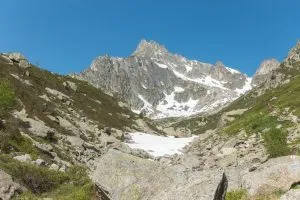
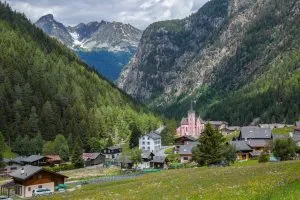
Begin your day with an ascent to Col du Balme, which provides a glimpse of the endpoint. From the refuge, take in the breathtaking views of the entire Chamonix Valley, as the circuit is almost complete. Then, head towards Col des Posettes and its equally-named ridge in France. On the left, you can admire some of the most iconic parts of the massif while descending steeply to Tré-le-Champ in the valley’s north.
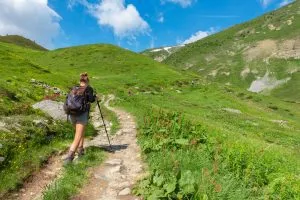
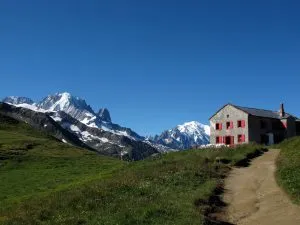
There are still some incredible sections left for the last two days. Today’s journey leads to the famous ladders, one of the Tour du Mont Blanc’s more exciting segments. You’ll soon enter the Aiguille Rouge National Park, where you can spot a variety of wildlife.
Then, you’ll reach a junction where you can hike further up towards the picturesque Lac Blanc, passing Lacs des Chéserys and witnessing some of the valley’s most photographed views. Alternatively, if you prefer an easier route, follow the scenic path over the Grand Balcon Sud to the endpoint of the day, Refuge La Flégère.
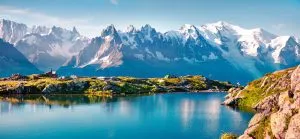
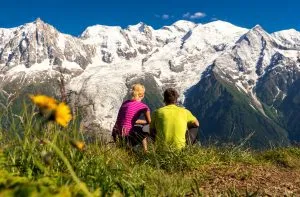
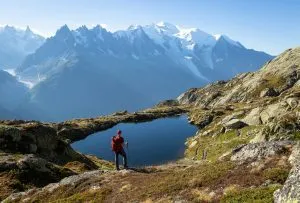
The last day of your hike is here! Follow the Balcon Sud until you reach Le Brévent. You have two options to reach the peak – take the cable car ride for an easier ascent or hike across slightly more challenging ladder sections. Either way, once you reach the top, spectacular views of Mont Blanc await.
Continue along the rocky trail to Refuge du Bellachat, where you’ll face a long descent to the Chamonix Valley. Finally, you’ll finish in Les Houches, where you started, but we recommend taking a bus to Chamonix to celebrate the completion of your thru-hike.
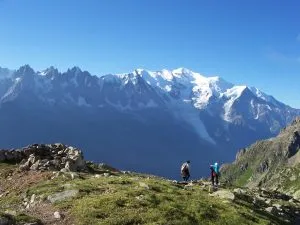
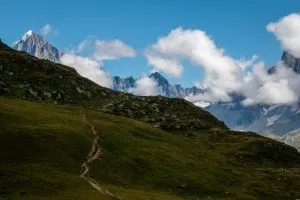
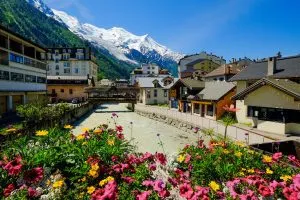
Pricing
Included in price
9x Accommodations with half-board
1x Accommodation with breakfast
Tour design and organization
Booklet with detailed itinerary and route instructions
Service and support during your hike
GPS navigation with an easy-to-use app
Description
Experience the grandeur of the Tour du Mont Blanc, a rewarding and exciting hike that circumnavigates the Mont Blanc massif, passing through France, Italy, and Switzerland.
This classic self-guided version covers the trail’s official 11 stages and around 170 kilometers, providing a complete experience for hikers who want to journey around Western Europe’s highest peak.
The stages described in this 11-day itinerary are not set in stone, as they offer alternatives to make the hike more leisurely or explore additional gems in the area.
While not technically demanding, the Tour du Mont Blanc is among our most demanding walking holidays. It requires preparation and planning, and hikers should be fit enough to walk more than 5 hours per day in diverse terrain for over a week.
We take care of everything else, from booking your accommodations and other necessary services to providing a detailed itinerary with a planned GPS track a few weeks before your journey. Our off-trail research and hiking experience allow us to best advise you on which specific route to take based on your wishes and preferences.
The Tour du Mont Blanc is waiting for you!
Location
Things to know
Our tours are designed to cater to a broad range of people, but some days can be quite challenging, with long distances and significant elevation gain. We aim to minimize this as much as possible while ensuring a high-quality experience. To fully enjoy our tours, you should be accustomed to walking for 4-6 hours, overcoming around 600 meters of elevation gain.
However, Alta Via 1 hut-to-hut hikes and Tour du Mont Blanc are more demanding and require a higher fitness level. On these tours, you may need to hike up to 8 hours per day and tackle substantial elevation gain.
Yes, our hiking holidays are appropriate for children who are physically prepared and have a good balance. However, to guarantee the safety and enjoyment of our young participants, we suggest that they should be at least eight years old to join our tours.
Proper footwear is crucial for our walking tours. We recommend wearing sturdy hiking shoes with ankle support for all our hikes. The terrain can be uneven, rocky, and slippery. Wearing sneakers can be dangerous, especially if you are not accustomed to hiking on such surfaces, as they do not offer enough protection and support. Robust shoes also provide the necessary support when your legs get tired during long hikes.
Yes, we highly recommend booking in advance to secure your spot. The earlier you book, the better the chances are of getting your preferred options. If you book close to the start of the season or during the season, we may not be able to guarantee availability in the hotels and apartments. Therefore, it is best to make reservations as soon as possible to avoid any inconvenience.
It is essential to note that accommodations at the destinations of our walking tours are in high demand during the summer season. Therefore, early booking is crucial to secure your preferred type of housing. However, we assure you that we will always try our best to provide you with the most suitable lodging based on your preferences. Rest assured that we will do everything possible to ensure that your stay is comfortable and enjoyable.
Our tours are well-organized, and all the destinations are easily accessible and straightforward to navigate. Therefore, it is unlikely that you will require a guide. Our comprehensive handout will provide you with all the essential information while still allowing you the freedom of a self-guided holiday.
However, if you prefer to have a guide, please let us know, and we will make the necessary arrangements for you.
Most of the accommodations we provide offer vegetarian and vegan options for breakfast. Additionally, you will find no shortage of vegetarian and vegan menus in restaurants during the tour. However, it is worth noting that some mountain huts on Alta Via 1 or Tour du Mont Blanc may not offer vegan meals. In such situations, it is advisable to bring your own food to ensure that your dietary needs are met.
The best time to go on a walking holiday in Italy varies depending on the location you plan to visit. Destinations such as the Amalfi Coast, Cinque Terre, and Sicily are best visited during early spring and fall when the weather is pleasant, and the crowds are fewer.
However, in areas like the Dolomites or around Mont Blanc, hiking is not possible when there is snow high up in the mountains. Therefore, the hiking season in these areas is limited from late June to late September. It is advisable to plan your trip accordingly to get the best out of your walking holiday in Italy.
We can best advise you after receiving a filled-out inquiry form.
While hiking in light rain is manageable, it is important to note that hiking during a storm can be dangerous. It is advisable to schedule hikes early in the day during the summer months to avoid thunderstorms. However, if the weather forecast predicts severe weather, it is best to reschedule your walk for another day or explore different tour options.
Your safety is our top priority, and we will always work with you to find a suitable solution in case of inclement weather.
Most of the destinations for our walking tours in Italy have excellent public transportation. While renting a car can provide flexibility, several locations cannot be comfortably accessed by car. Instead, we suggest relying on public transport to reduce stress and have a more environmentally friendly experience.
We provide all the necessary information for buses, trains, and ferries to ensure that you can reach your destination with ease. By using public transport, we can also reduce our carbon footprint and contribute to a more sustainable travel experience.

Self-guided
Hassle-Free
Trusted by Many
Handpicked Adventures
Unbeatable Support
Similar Walking Tours in Italy

